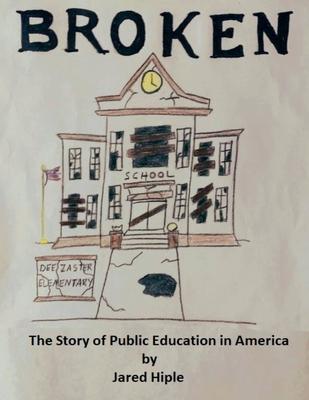Few argue with the idea that our public school system is broken or understand why it's failing or how we ended up in our current educational predicament. In an easy-going, personable style, Broken takes the reader through a brief history of public education in the United States that demonstrates how and why a mid-19th century Prussian model is ill-equipped to cope with the dynamic 21st-century technological world.
Part 1: The Machine
What components work in unison to create the powerful beast we call public education? The short answer is teachers, funding, bureaucracy, and unions. The first two chapters focus solely on teachers, their daily lives, and the detailed aspects of their job. Chapter 3 takes an up-close personal look at the fiscal side of public schooling and how schools across the nation are funded, who funds them, and where exactly all that money goes. Chapter 4 tackles the bureaucratic design of the system. Massive increases in administrative staff now overrun school districts and have contributed to the continued degradation of the system. The final chapter in this section explores how teacher unionization has impacted schools across the country, past and present.
Part 2: Fuel for the Fire
This section analyzes what is, is not or should be taught. Chapter 7 presents a comprehensive investigation into standardized testing and how it has impacted public schools. The foray through the fire then continues with a detailed look at special education. Readers learn what disabilities are included in the special education realm, how schools address disabilities, and how the overall special education system has impacted students and teachers. Part 2 closes with a thorough examination of the technological beast that has infiltrated our world during the last two decades. This new technological landscape has taken over classrooms, exerting stressors on teachers, students, and schools.
Part 3: The Hard Truth
Hard Truth examins the current behavioral issues wrecking classrooms across the nation. Behavior, particularly the current surge in disruptive and violent behaviors in public schools, impacts student performance and safety. Chapters 11 and 12 make a brave attempt to address the current firestorm of issues surrounding social emotional learning (SEL) and critical race theory (CRT). These two topics have become major areas of contention, and we will take a hard look at truth and hyperbole around these issues. Chapter 13 embarks on the touchy yet critical topic of gun violence in schools. We'll investigate theories behind what motivates school shootings, how schools have responded to these horrible tragedies, and what we can do as a nation to stop these events from occurring. Lastly, we will break down the role parents must play in the educational process and how public schools can work harder at increasing and improving parent engagement and overall community support.
Part 4: The Road Ahead
The finale examines the future of public education and how to shift our course in the right direction. Chapter 15 conducts an examination of the COVID-19 lockdowns and how they impacted public education. We examine how school closures impacted student performance, as well as how these closures affected the mental health and cognitive development of kids across the country. Chapter 16 probes teacher shortages and how they are currently impacting schools, as well as what future classrooms may look like if school districts cannot find a meaningful way to address these colossal shortages. We then take a hard look at the current school choice debate raging across the nation in Chapter 17 and discuss the different types of school choice options as well as the pros and cons of each. We step into our time machines and travel into the future of education in Chapter 18, surveying various predictions about public schooling in the years and even decades to come.
